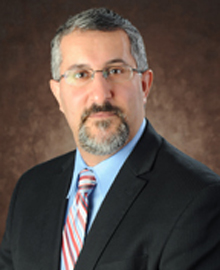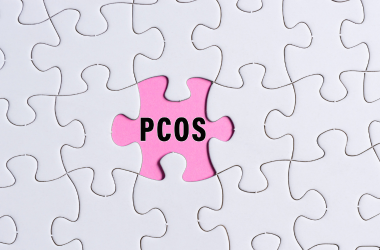Saratoga Hospital offers some of today’s most high-tech and least invasive spine surgery and treatment options while providing comprehensive, patient-centered care.
The team at Saratoga Hospital cares for a range or spine-related problems such as compression fractures, degenerative disc disease, herniated discs, curvature of the spine, and sciatica. We are the only hospital in the region to earn a Blue Distinction® quality designation for spine surgery. The Blue Distinction Centers for Specialty Care® program recognizes hospitals across the country that have a proven track record for delivering better results – including fewer complications and readmissions – than hospitals without these recognitions.
 “I trained at the renowned Spine Institute of Beth Israel Medical Center in New York City, and I have performed over 1500 spinal surgeries. Patients can feel confident that our team provides a very high level of care.”
“I trained at the renowned Spine Institute of Beth Israel Medical Center in New York City, and I have performed over 1500 spinal surgeries. Patients can feel confident that our team provides a very high level of care.”
Click on any service to view more information.
Surgical Options
Whenever possible, we offer a minimally invasive approach, which means less discomfort and scarring as well as faster recovery times. For certain conditions, both minimally invasive and advanced robot-assisted surgery options are offered, enabling our surgeons to perform even the most complex and delicate procedures with extreme precision. We do everything we can to make you feel comfortable and well cared for.
This procedure is used to relieve pressure placed on the nerves, nerve roots and/or spinal cord in the neck. Typically, what is pressing on the nerve roots or the spinal cord is a disc herniation and/or bone spurs. The procedure involves removing the bone spurs and/or disc material that is compressing the nerves and then placing a piece of bone graft where the disc was located, in order to promote healing of the bones and biologically weld them.
This is a minimally invasive procedure intended to treat painful compression fractures. It is most often indicated for patients who are having severe back pain secondary to a compression fracture. Typically, most patients are treated with conservative treatment, which may include pain medications and/or bracing, and/or physical therapy for anywhere from two to six weeks after they have a compression fracture. If the compression fracture continues to be painful and is causing severe pain and interfering with a person’s quality of life, then a decision can be made to potentially proceed with a kyphoplasty.
This procedure is used to relieve pressure on the nerves in the lower back. It is intended to relieve symptoms that might include leg pain, numbness and/or tingling and/or weakness caused by compression of nerves in the low back by bone spurs and/or disc herniations.
This is a procedure where, rather than removing the disc and fusing the bones together, a disc replacement is placed that allows continued motion at the disc level. Typically, patients present with neck pain and/or arm pain, associated numbness, tingling and/or weakness. When patients have failed conservative measures including physical therapy, anti-inflammatories and/or injections, this surgery becomes an option.
This is a method of fusing the spine, but instead of accessing the spine in the lumbar region from the back, the spine is accessed from the patient’s side. This approach allows the disc to be removed without disrupting the muscles in the back. It also allows a large interbody bone graft and/or interbody plastic cage to be placed that indirectly opens up the spinal canal. This is typically a procedure done in the lumbar spine, and typically used in patients who have degenerative conditions, including degenerative disc disease and spinal stenosis.
This a procedure that enlarges the opening where the nerves exit the spinal canal. Indications for this procedure include pain, numbness, tingling, and weakness down one or both extremities in patients who have failed conservative measures. Typically, patients have multi-level degenerative disk disease and are not necessarily candidates for an anterior cervical discectomy and fusion.
This procedure is intended to relieve pressure on the spinal cord. This is called spinal stenosis and can occur at several levels. Patients who typically have a laminoplasty have signs or symptoms of myelopathy, a condition that can result in weakness, pain, numbness in the arms along with difficulty with coordination of the hands, balance difficulties, gait disturbance, bowel and bladder dysfunction. The goal of the surgery is to relieve pressure on the spinal cord and prevent further progression of the patient’s symptoms.
Lumbar spinal fusion is a surgical technique in which one or more of the vertebrae of the spine are fused together, so that motion no longer occurs at those levels. Bone material is placed around the spine and, over several months, the bones will heal subsequently joining or welding the vertebra together. Lumbar spinal fusion is typically done in conjunction with a lumbar laminectomy.
This is a procedure where vertebrae are biologically welded together. It includes placing bone graft between vertebrae and relies on the body’s inherent ability to heal a fracture. Most patients undergoing spinal fusions have instability conditions such as scoliosis, spondylolisthesis, and rarely degenerative disc disease in the lumbar spine. Cervical (neck) fusions are commonly performed for disc herniations, spurs, spinal cord or nerve decompression.
Non-Surgical Options
We take a multi-disciplinary approach to relieving chronic pain. Even in cases where pain cannot be eliminated, it typically can be reduced—and quality of life can be improved—with an individualized pain management program.
Our pain management physicians diagnose and treat a broad range of conditions, including:
- Arthritis pain
- Back and neck pain
- Pelvic/abdominal pain
- Phantom limb pain
Our physical therapists help restore movement and function, reduce pain, and prevent disability. Services include:
- Back and neck rehabilitation
- Rehabilitation for orthopedic conditions
- Sports rehabilitation
Recognition
 The Blue Distinction Centers for Specialty Care® program recognizes hospitals across the country that have a proven track record for delivering better results – including fewer complications and readmissions – than hospitals without these recognitions. Blue Distinction Centers+ meet the same quality criteria as Blue Distinction Centers, but are further recognized for their expertise and efficiency in delivering high quality care that is more affordable for patients.
The Blue Distinction Centers for Specialty Care® program recognizes hospitals across the country that have a proven track record for delivering better results – including fewer complications and readmissions – than hospitals without these recognitions. Blue Distinction Centers+ meet the same quality criteria as Blue Distinction Centers, but are further recognized for their expertise and efficiency in delivering high quality care that is more affordable for patients.
Patient Information
For patients that will be having spine surgery at Saratoga Hospital, we provide a live, in-person class that covers everything you need to know before surgery and what you can expect during your stay at Saratoga Hospital, as well as after discharge. For those patients that can't make the live class, you can use the link below to view a recording of the class. We've also included an educational brochure for your review as well





